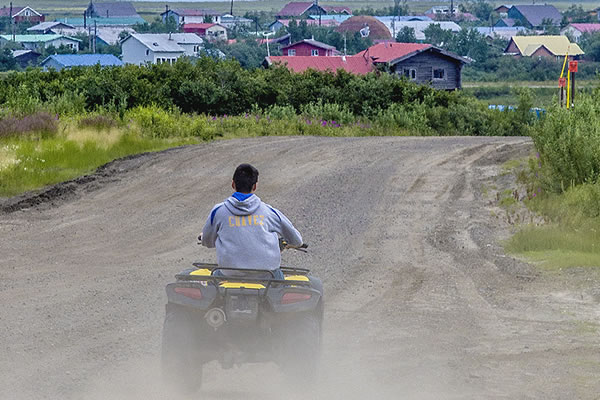Diminishing dust in rural Alaska

Controlling dust from rural Alaska roads and runways is a priority at the Alaska University Transportation Center.
University of Alaska Fairbanks transportation engineers have spent years working to clean up one of rural Alaska’s dirtiest problems.
Billowing clouds of dust, generated by the gravel roads and runways that connect most villages, have become an unfortunate part of life in those communities. Over time, that adds up to a huge problem: A lightly traveled 2-mile stretch of unpaved road can produce nearly 11,000 pounds of dust each month.
Those airborne particles create grime, hazardous driving conditions and, most critically, health problems for people who live amid the dust. The Alaska University Transportation Center, which is part of UAF’s Institute of Northern Engineering, has made the issue a priority since the mid-2000s, when the health implications of dust pollutants became clearer.
“Dust is a huge problem in the villages,” said AUTC Director Billy Connor. “It’s really something we’ve spent a lot of time working on.”
That fixation on dust has driven studies on several things — road design, speed limits and the characteristics of various Alaska soils. Researchers have tested numerous additives, from plain old water to polymer stabilizers, to see what works best. AUTC even developed an ATV-mounted instrument to better measure dust levels at remote study sites and launched a pilot program in the Interior Alaska community of Ruby.
That unorthodox focus by UAF researchers is helping Alaska transportation officials understand what tools work best in their long-running battle with dust.
More information:
